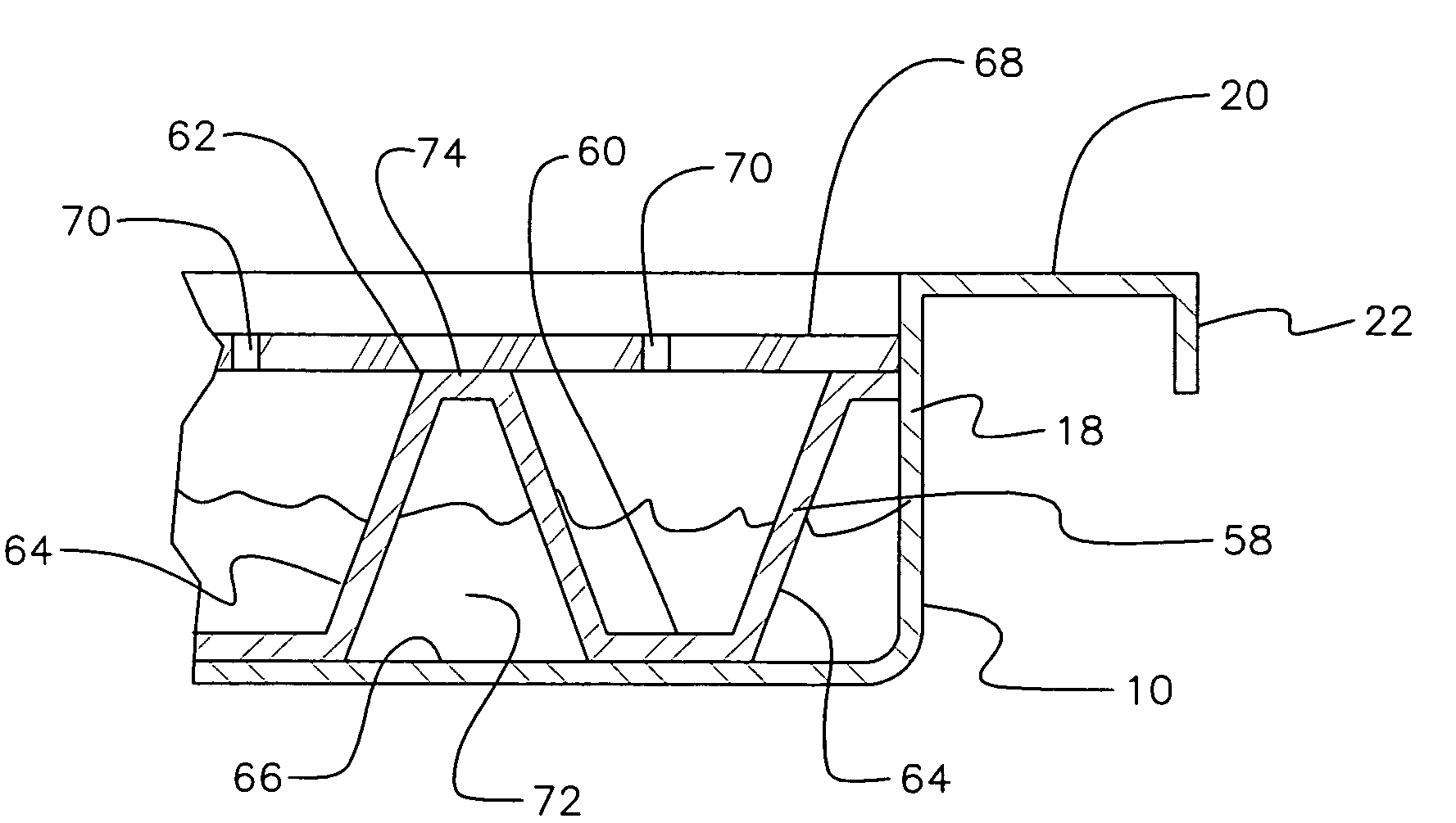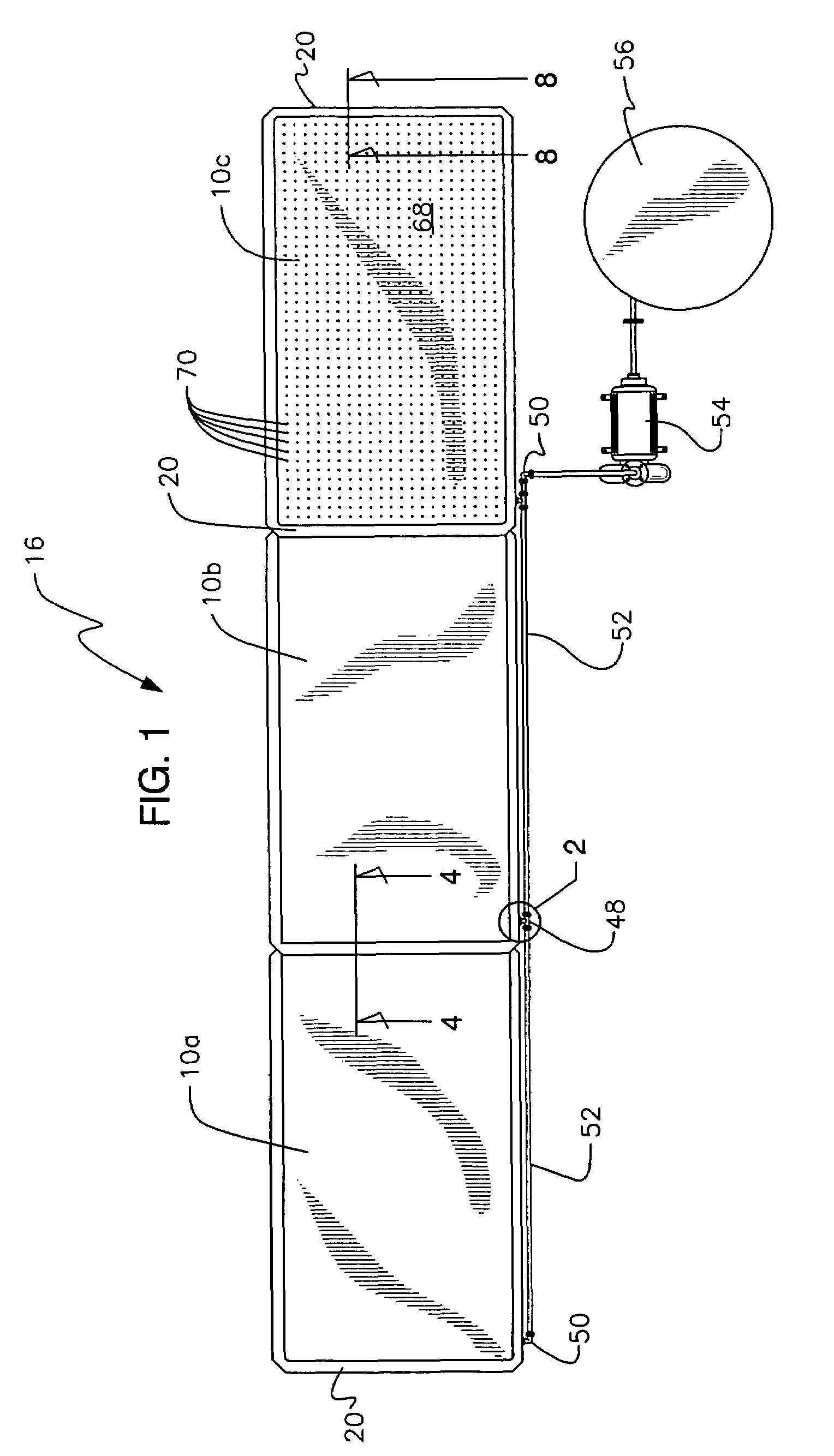Modular and mobile waste and/or hazardous liquid containment and collection shower system
a shower system and modular technology, applied in the direction of sewage draining, functional valve types, machines/engines, etc., can solve the problems of not being easily modified, not being easily made mobile, and not having the ability to be modular, so as to avoid contamination of food contained in the system
- Summary
- Abstract
- Description
- Claims
- Application Information
AI Technical Summary
Benefits of technology
Problems solved by technology
Method used
Image
Examples
Embodiment Construction
, contained herein below, may be better understood when accompanied by a brief description of the drawings, wherein:
[0017]FIG. 1 is a top plan view of a hazardous and / or waste water collection and containment shower system of the present invention, illustrating the use of multiple modular pans or water impervious barriers;
[0018]FIG. 2 is a top plan view, partially in section, of a valve connection employed in any one of the modular pans employed in the present invention;
[0019]FIG. 3 is a cross section view of FIG. 2 along lines 3-3 of FIG. 2;
[0020]FIG. 4 is a cross-sectional view, along lines 4-4 of FIG. 1, illustrating how two modular pans interconnect by way of friction fit along top edges of upstanding walls thereof;
[0021]FIG. 5 is a perspective view of a corner section of a modular pan employed in the present invention;
[0022]FIG. 6 is a side plan view, partially in section, of side edges of two modular pans illustrating the manner in which any two modular pans interconnect;
[0023...
PUM
 Login to View More
Login to View More Abstract
Description
Claims
Application Information
 Login to View More
Login to View More - R&D
- Intellectual Property
- Life Sciences
- Materials
- Tech Scout
- Unparalleled Data Quality
- Higher Quality Content
- 60% Fewer Hallucinations
Browse by: Latest US Patents, China's latest patents, Technical Efficacy Thesaurus, Application Domain, Technology Topic, Popular Technical Reports.
© 2025 PatSnap. All rights reserved.Legal|Privacy policy|Modern Slavery Act Transparency Statement|Sitemap|About US| Contact US: help@patsnap.com



